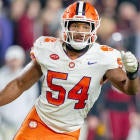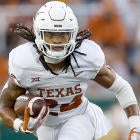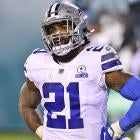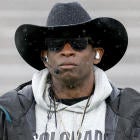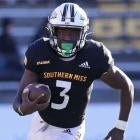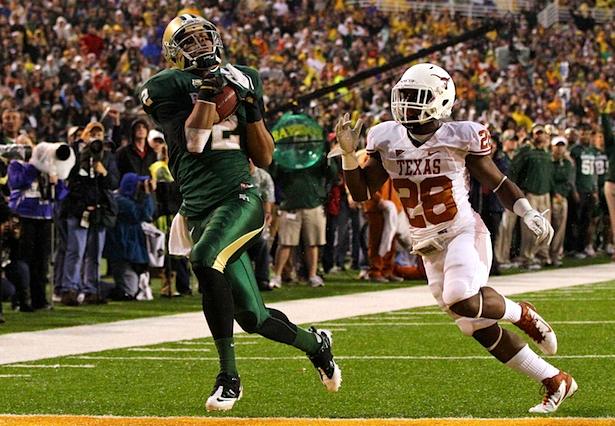
Ask any Longhorn fan this summer, or turn on any radio station in the state, or click on any website, or read any preseason magazine, or run across a lonely steer on some hard-scrabble, drought-ravaged patch of land in the middle of nowhere, and you'll always get the same answer: Texas' fate in 2012 hinges on the quarterback. Find that guy, and everything else falls into place.
In fact, everything else is pretty much in place. The rest of the offense consists of last year's top two rushers, top four receivers and four returning starters on the line, the vast majority of whom were just freshmen and sophomores. On the other side, the defense has the best pair of bookend defensive ends in the country, Alex Okafor and Jackson Jeffcoat, and arguably the best secondary. It was already the best statistical defense in the Big 12 by a wide margin in 2011, for the fourth year in a row. The roster as a whole is as talented as ever and picked up some valuable battle scars over the last two years. Just give them a quarterback, at long last, and the sky is the limit.
That's the general consensus, anyway, everywhere in Texas that isn't the Longhorn locker room. But ask head coach Mack Brown and defensive coordinator Manny Diaz, as a handful of reporters did on Wednesday, and they'll insist that the entire team is still on notice from last December – the defense, especially:
"The defense has to get better or we'll end up in the Holiday Bowl again," Diaz said. "No offense to the Holiday Bowl. Shamu is fun to go see, but he's not going to change much from year to year. We don't need to see him again."Mack Brown interjected, saying, "People talk about how good the defense was. Well, we gave up 48 points to Baylor and helped their quarterback win the Heisman Trophy."
Chimed in Diaz: "And we didn't even get a thank-you card (from Robert Griffin III)."
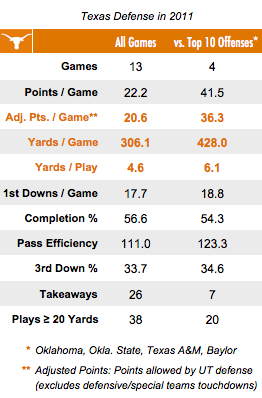 Classic coachspeak? Without a doubt; Mack has mastered the language and is firmly committed to advancing it to ever higher, more complex levels of vacuity. In this case, though, he manages to hit a vein: In five losses in 2011 – all of them within the conference – the vaunted Longhorn D was singed for at least 420 yards and 31 points in three of them, even after you exclude multiple touchdowns by opposing defenses and special teams. The 352-yard, four-touchdown, Heisman-clinching grenade RG3 lobbed into the secondary in the season finale was only the most damaging in a series by the league's most explosive offenses.
Classic coachspeak? Without a doubt; Mack has mastered the language and is firmly committed to advancing it to ever higher, more complex levels of vacuity. In this case, though, he manages to hit a vein: In five losses in 2011 – all of them within the conference – the vaunted Longhorn D was singed for at least 420 yards and 31 points in three of them, even after you exclude multiple touchdowns by opposing defenses and special teams. The 352-yard, four-touchdown, Heisman-clinching grenade RG3 lobbed into the secondary in the season finale was only the most damaging in a series by the league's most explosive offenses.
Before Baylor blew up, Oklahoma torched the 'Horns behind 367 yards and three touchdowns passing from Landry Jones, whose receivers spent most of the afternoon making Texas' young corners look like lost children in a 55-17 blowout. (The Sooners mercifully took their foot off the gas in the fourth quarter, after scoring on seven of ten possessions in the first three.) A week later, even with OSU quarterback Brandon Weeden limited to one of the quietest days of his career, the Cowboys became the first attack over 200 yards by ground and air against Texas since the Bush/Leinart-led USC juggernaut in the 2006 Rose Bowl; UT controlled time of possession by more than 18 minutes, but was never in the game after being gashed on a 74-yard touchdown run in the third quarter. Then, after a mostly stellar November, there was the aforementioned cameo in the season finale of the RG3 Show. The Sooners, Cowboys and Bears were all balanced, up-tempo attacks led by savvy, veteran quarterbacks, who found the Texas D to be a very moveable object.
The counterargument, of course, centers on that stellar November, when the defense held Missouri, Kansas State and Texas A&M at or near season lows for yards and points in consecutive weeks, and still came within a last-second field goal against the Aggies of losing all three due to a combination of injuries and incompetence on offense. The last time we saw the Longhorns, in the Holiday Bowl, the offense was still limping along without an identity while the defense was busy dumping Cal quarterback Zack Maynard somewhere in the Pacific Ocean. When not faced with one of the most prolific attacks in the nation, Diaz's crew could be downright oppressive.
But assuming a conference championship falls somewhere near the top of the list of goals this fall, it's worth pointing out that path to the Big 12 title still goes through several of the most prolific attacks in the nation. Texas' first four conference games are against Oklahoma State (in Stillwater), West Virginia, Oklahoma and Baylor, four of the top six passing offenses in the nation last year, followed by a Thanksgiving visit from TCU, which averaged more than 40 points per game on the arm of first-year starter Casey Pachall. Even if you strike Oklahoma State and Baylor from that list because of question marks at quarterback, and you ignore the season-ending trip to Kansas State on Dec. 1, that's three games in which any realistic version of the Longhorn offense with David Ash or Case McCoy at the controls will not be able to keep pace without better play from the defense than it got in similar spots in 2011.
Not that the burden is the defense's to assume alone; the offense obviously has much, much further to go. But Diaz is right that the status quo on defense cannot hold if the 'Horns are going to get where they want to be, or even come very close.













